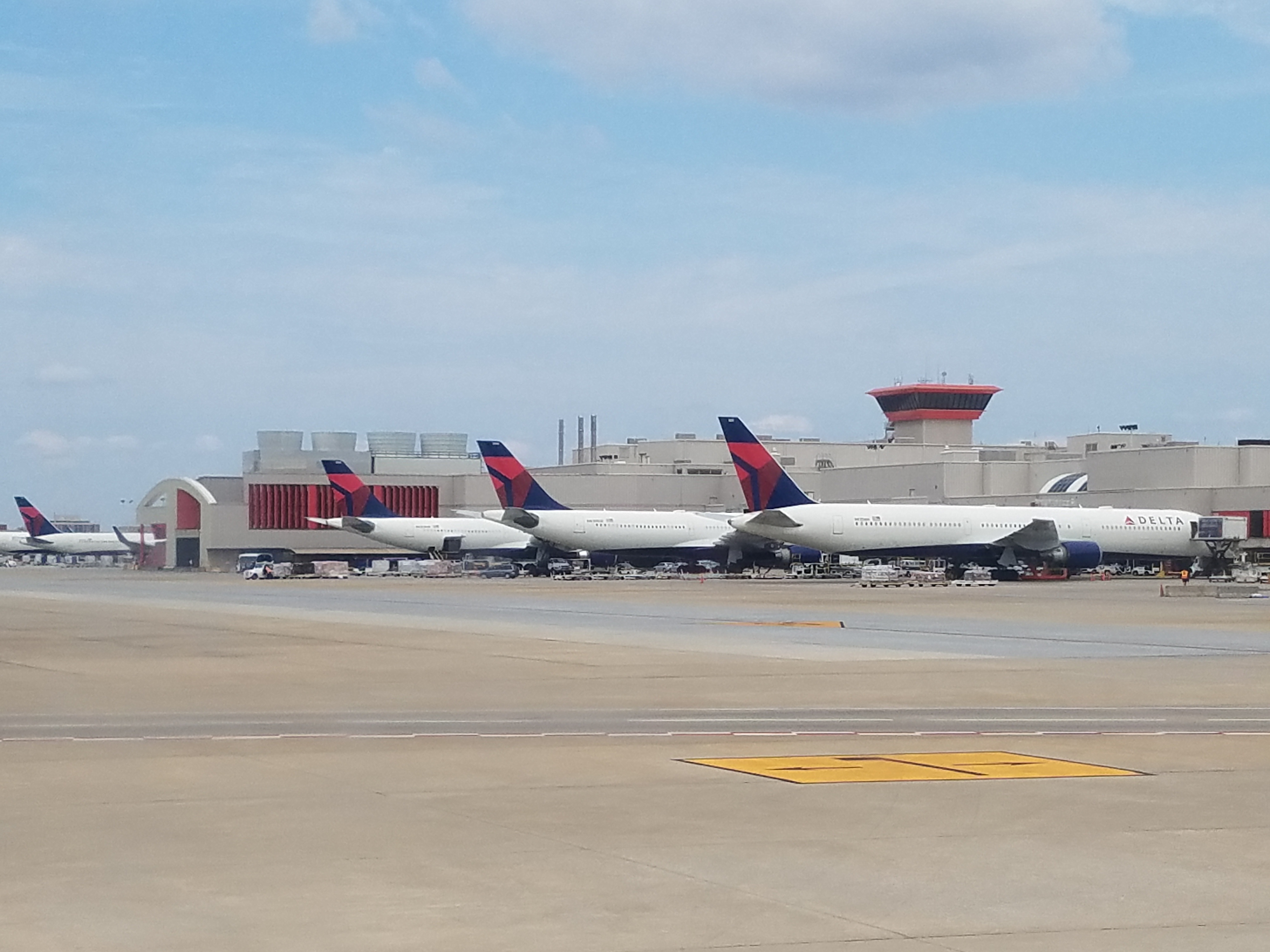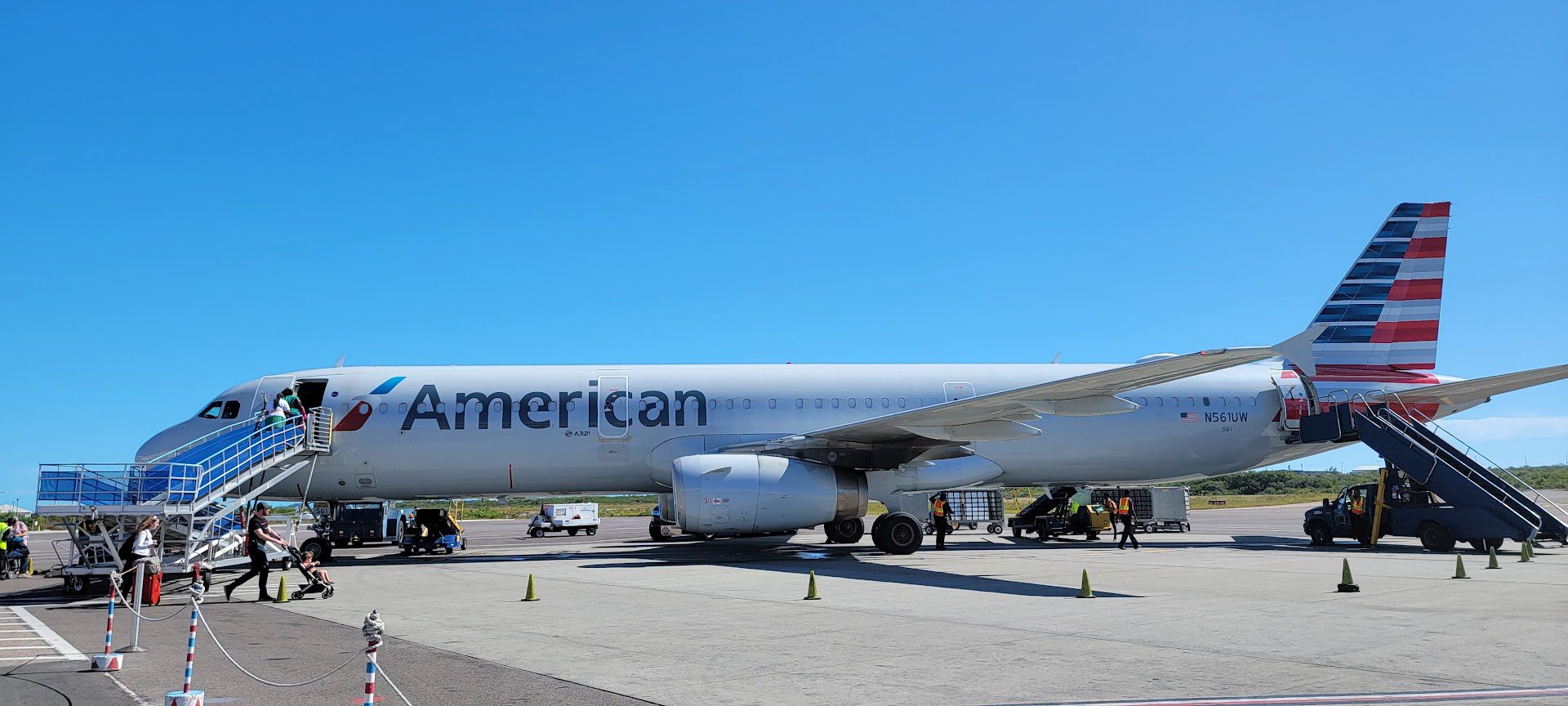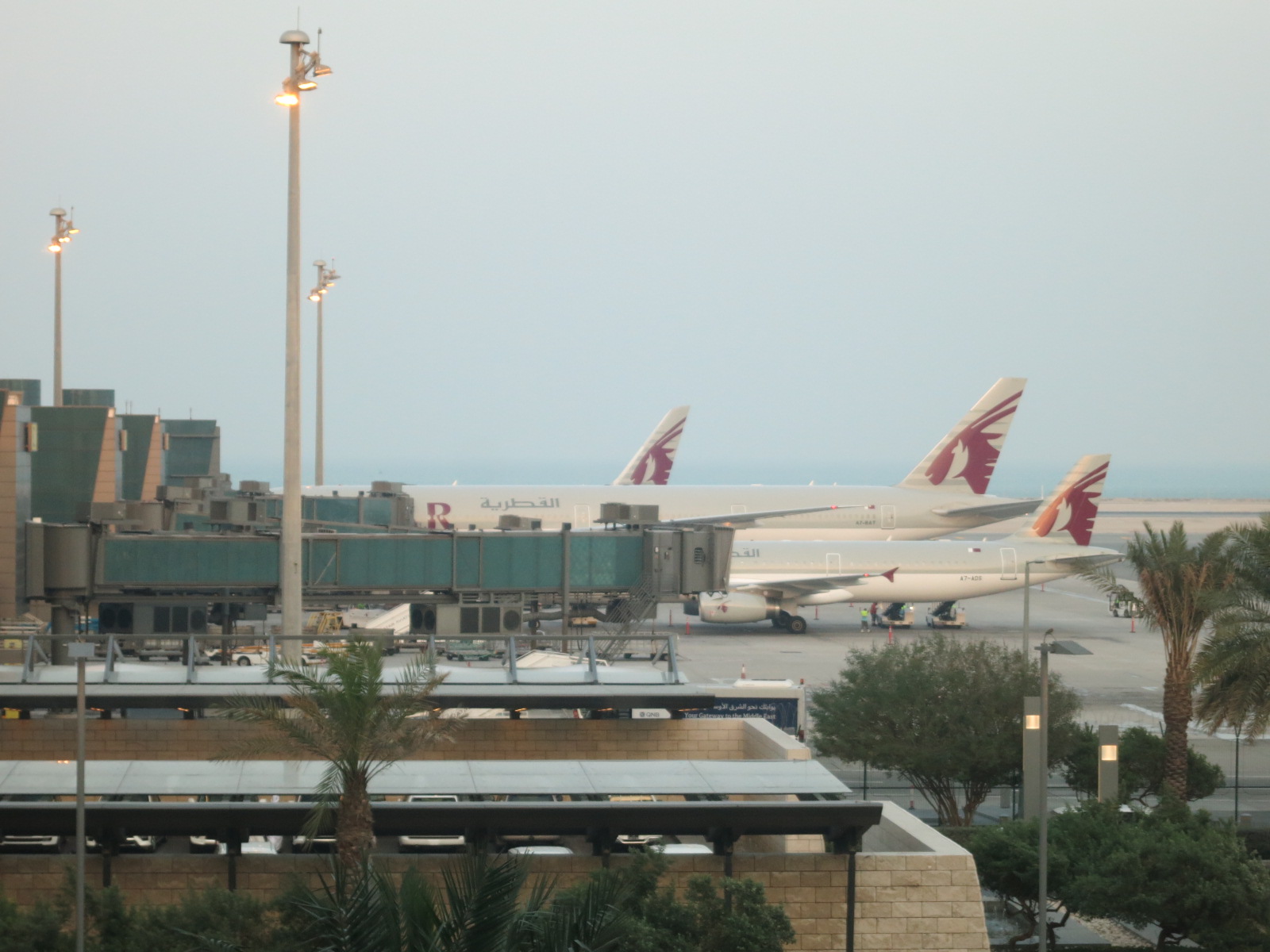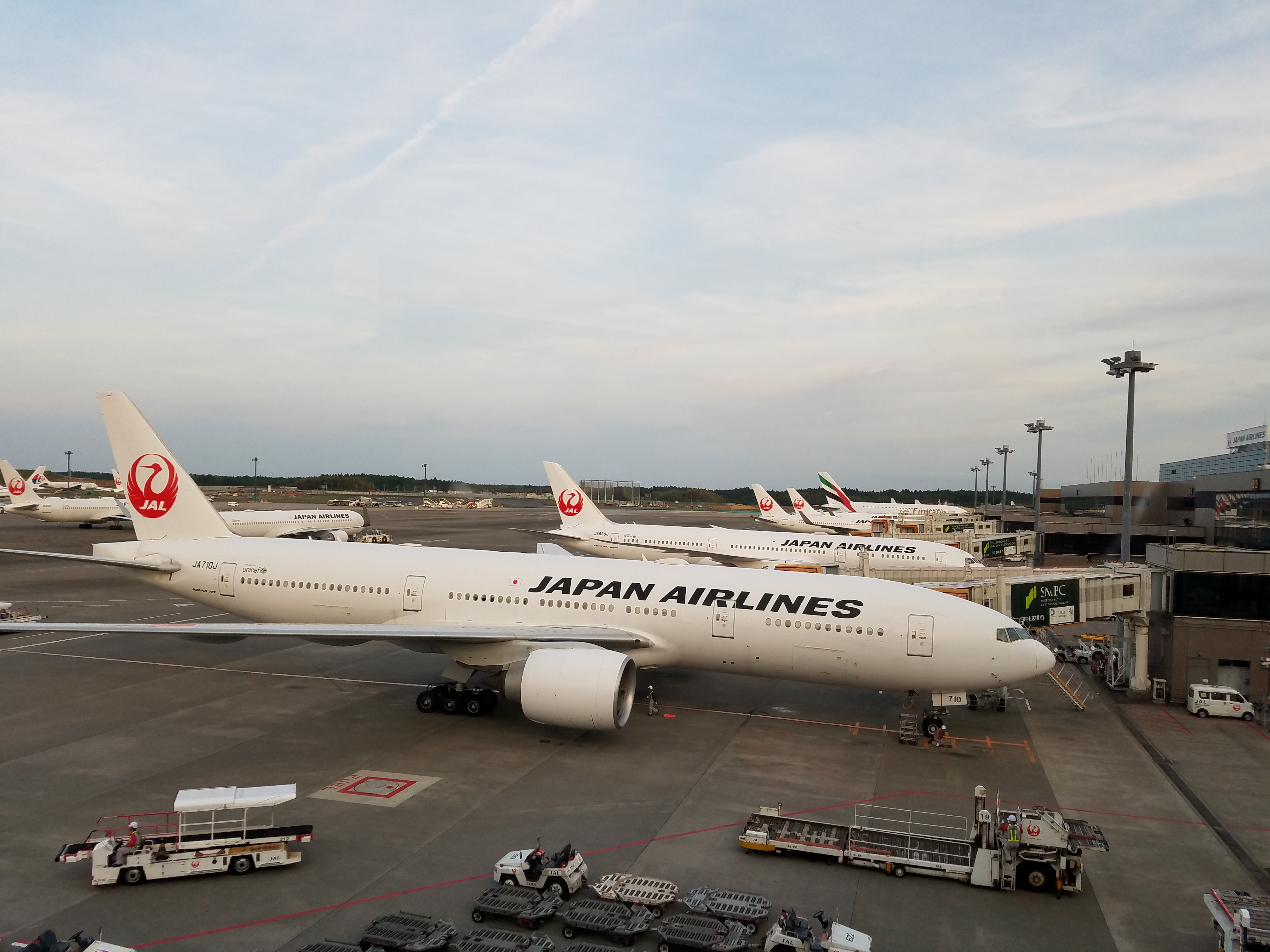Aviation analytics company Cirium released its 2023 On-Time Performance results for airlines and airports. I’m most interested in the final numbers for North American airlines. Delta performed best, but American Airlines has really improved, and JetBlue remains abysmal.
| Rank | Airline | On-Time % | ||
| 1st | Delta Air Lines | 84.72% | ||
| 2nd | Alaska Airlines | 82.25% | ||
| 3rd | American Airlines | 80.61% | ||
| 4th | United Airlines | 80.04% | ||
| 5th | Southwest Airlines | 76.26% | ||
| 6th | Spirit Airlines | 71.16% | ||
| 7th | WestJet | 69.29% | ||
| 8th | Frontier Airlines | 68.68% | ||
| 9th | JetBlue Airways | 68.33% | ||
| 10th | Air Canada | 63.17% |
Strictly speaking the last data update to this list was December 31 at 10:05 a.m. Central time, but it doesn’t appear that there were enough disruptions New Years Eve to alter the full year results.
Delta was the best for on-time performance in 2023. Alaska trailed close behind, as they often do. Delta’s operations remain stronger than other airlines, but no longer by a lot. Pre-pandemic they’d go months at a time without cancelling a mainline flight. They don’t come close to that anymore.

What’s striking to me is American‘s improvement. They’ve become reliable. Hopefully that will hold.

Southwest always lags in on-time performance, but they also schedule to turn planes a little faster than rivals. They don’t start boarding until 30 minutes prior to departure, versus 35 and even 40 minutes for competitors.
It’s amazing just how bad the on-time performance of JetBlue is. They’re great once you’re in the air (though also not as great as they once were). On the ground they’re a mess across the board. They should be focused on operating reliably rather than acquiring and then merging Spirit into their operation. If anything, based on the data, Spirit should merge them into theirs! Spirit has really improved its operations a lot compared to where they were 7 and 8 years ago.
And while some of the problems with Air Canada are attributable to their home country’s airports, it is amazing that the Canadian flag carrier is still underperforming JetBlue in on-time operations.
Globally Delta trails Avianca, Azul, and Qatar Airways which were more on-time than the Atlanta-based carrier. Qatar operating more reliably than Delta is perhaps reason enough to reject Delta’s attempts to ban the carrier from growing its U.S. flying, should that political push ever rear their ugly head again.

In Europe, Iberia was most on-time followed by Austrian (that Vienna hub is fantastic), and LOT Polish (no opportunity for Polish jokes!). British Airways, Air France, and Lufthansa failed to crack the top 10.
ANA and Japan Airlines were the most on-time airlines in Asia. Watching JAL board a widebody in 25 minutes is a thing of beauty, and apologies in Japan over 2 minute delays always bring me warmth and a smile.

Among Gulf carriers, Oman Air and Safair were both over 92% on-time but didn’t have the volume to place globally ahead of Qatar. They were the world’s two most on-time airlines in 2023.
Among the world’s most on-time global airports, four were Delta hubs: Minneapolis (#1!), Salt Lake City, Detroit, and Seattle (also home to Alaska Airlines). Obviously they benefited from strong operational airlines, but the airlines also benefited here too. Delta’s New York JFK, Atlanta, Boston and LAX hubs did not make the list. Meanwhile seeing Philadelphia at number 8 surprised me. Doha and Tokyo Haneda at numbers 9 and 10 did not surprise.

Washington National actually outperformed Detroit, Seattle, Philadelphia and Doha. That surprised me, given runway work and constrained approaches. It also tends to perform poorly in weather in my experience, yet was only a smidge behind Salt Lake City with an overall 83.2% on-time performance for the year.

Washington National Historic Terminal
n summary, the 2023 On-Time Performance report offers a revealing snapshot of the aviation landscape, showcasing Delta’s operational excellence, American Airlines’ significant improvement, and JetBlue’s ongoing struggles. While Delta continues to set the benchmark in North America, global competitors like Avianca, Azul, and Qatar Airways are better still. The data also highlights the symbiotic relationship between airlines and airports, with hubs like Minneapolis and Salt Lake City excelling in punctuality.


@ Gary — I am surprised to see UA at >80% after last summer’s weeks-long meltdown at EWR.
@Gary – PHL probably improved because AA is flying fewer flights in/out of PHL. Anecdotally, most of my delays out of PHL are cascades from other AA hubs – CLT in particular.
If you think JetBlue is abysmal now, wait till you watch them try to absorb Spirit assets and scale up. The airline is run like a high school bake sale.
Delta delivers premium on-time flights for its high-end, sophisticated guests.
Somewhere, Tim Dunn warms up for a victory lap….
The fact that other airlines are improving – including both AA and UA – doesn’t make DL’s performance any less impressive.
On-time is only one part of the airline product and AA’s revenue generation issues in the 3rd quarter show it struggled to attract business travel as UA and DL do.
and a 4% difference in on-time is statistically significant even if anecdotally most people don’t see the difference in their experience.
The fact that DL and UA both have large operations in NYC – DL’s larger -makes what both accomplished better. DL just didn’t have a NYC operational meltdown in 2023 or 22…
and it is precisely because the ULCCs are so bad and everyone knows it that they continue to lose good revenue even when they need it most.
And anyone that talks about privatizing ATC in the US because it works so well in Canada needs their head examined. Canadian airlines’ on-time is worse than even US ULCCs and it is partly due to much higher rates of ATC delays than in the US
Breaking news. It’s 11:45 pm in Japan. At 5 pm, a JL A350 landed at Haneda and collided with a coast guard plane, killing 5 of 6 on the coast guard plane, which was carrying emergency supplies for the earthquake.
The A350 was totally destroyed in a fire but all 300+ passengers on the CTS-HND alive.
Delta’s 4:50 pm departure to Seattle made it but the post 5 pm departure to Detroit is stuck and cancelled.
@derek, thanks for the breaking news. This should be in a separate post but I guess talking about on time performance is preferable.
In the last 10 years I have flown the big four less and JetBlue more, resulting with me being happier about getting to my destination in a reasonable time. Because of JetBlue non-stop service, I may be a bit late but I have not missed a connection. Further, I have found that JetBlue has lied less. Plus the pricing of JetBlue has saved me money on the trips. Additionally, the little bit of extra pitch has made a lot of difference. I sure hope that they stabilize their operation and stay around.
Victory lap accomplished.
Unlucky me to be in the 17.75 percent for Alaska. I flew it for the first time over Christmas, SFO-PHX-SFO, and experienced a total of over 4 hour delays. No weather issues involved. My question is that using Flightaware, it lists the flight as Horizon, not Alaska. Do your statistics take that into account?
Gary
On one hand you point out AA agents for closing doors early before departure
On the other – as a result of their actions flights are on time – that improves their benchmark
This is what happens when you teach to the test – scores improve, students do not learn
SO AA scores are better – but as a customer I miss some flights that are sitting at the airport
I have flown Air Canada three times in my adult life and each has been delayed, for an average of 3.5 hours lol
If someone could help educate me and satisfy my curiosity — do all airlines “pad” arrival times (not sure what the correct terminology is) equally and if that practice is becoming more frequent could that help explain improvements in an airlines data?
derek,
I am presuming that Gary and other blog operators have content ready to go and set for auto-release at specific times.
Also, the Haneda flight is a breaking news tragedy. Most online discussions of breaking news tragedies don’t add much insight but rather lots of speculation.
jsm,
Gary can reply how cirium presented the data but the DOT, when it releases its data, rolls it up to the marketing carrier level since that is how consumers buy airline tickets but also breaks out regional carriers.
If I padded my flights 5-10 mins more than everyone else on the schedule, I’m sure I’d be the #1 in “on-time” performance, too.
It does not take 1hr 20 mins to get from LAX to LAS, Delta..
Bunch of crap
How dare you say that John l. The nerve.
@ffi – AA gate agents were doing this when the airline’s on-time performance was abysmal, this isn’t driving the operational *change*
John L
scheduling anything transportation related requires overscheduling at some times in order to arrive on-time a certain percentage of time knowing that you will arrive late another percentage of time.
You can’t drive 25 miles in any urban area in the exact same time every time.
Delta might have a higher standard for on-time and overschedules more but every airline arrives early at least some of the time if they want to have any kind of respectable on-time percentage.
and few people object to arriving a few minutes early as long as they don’t have to wait for a gate which blows the whole point of arriving early because on-time is based on gate arrival.
Delta obviously manages to make more money by scheduling the way it does and there is no complaint data on the amount of early arrivals or overscheduling but there sure is for flight delays and cancellations.
To no one’s surprise, Delta consistently has one of the lowest complaint ratios among US large jet airlines.
It’s useful to remember that Tim Dunn believes that Delta is the world’s only PERFECT airline.
Padding makes sense because certain routes and destinations are more delay prone than others. Every time I fly CLT – DCA (and that is once a month) the flight time is considerably less than the advertised time. This means that with a minor delay (very often as a result of congestion at either CLT or DCA) we still arrive on time.
I worked for a company that delivered double digit growth for a while. The company leadership promised double digit even when, realistically, this was no longer feasible. Wall Street punished the company for delivering 8% when it had promised double digit. A new CEO came in and promised a range of 6% to 9%. We delivered the same 8% and all was good on Wall Street.
When I arrive in 57 minutes at DCA when it was advertised as 1hr20 I am happy. If I am promised 57 minutes and arrive 1hr and 10 minutes the message is “we were late”.
So, again, a little padding makes sense.
63% doe Air Canada? They must have paid somebody off to get that good a number. I tried them once for a flight to Asia and arrived 25 hours late. I asked a gate agent what the issue was and she looked at me and smiled and said “we don’t have a plane, happens all the time.” I feel sorry for Canadians.
In 2017 the WSJ found that Delta and United padded schedules the most: https://www.wsj.com/articles/which-airlines-pad-their-schedules-the-most-1498662950 (behind a paywall).
In 2023 Southwest takes the cake according to this report of median flight times: https://financebuzz.com/airlines-padding-scheduled-flight-times
Air Canada is garbage. It’s not even the sh!tty 63%. It’s thr fact that when you inevitably miss your connection, you will be stranded with noone picking up the phone to help you
Americans get suckered in with their plane-filling cheap fares only to suffer later.
Just don’t fly AC.
Not to seem ignorant , I am an Av geek but obviously not as educated as most here .
Can someone please explain ( A short explanation is ok here ) , the reason(s) why B6 is always so terribly bad in on time performance ? I understand their 2 bases JFK and BOS are hindered with ATC and extreme weather events .
Is their management , Ops, or apathy to run a top class operation the primary reason ? Wrong people in the wrong departments ? B6 was a niche operation years ( decades ) ago with a big demand from the flying public .
Thanks for your input and best in 2024 !!
@Robb, maybe on time performance is not as stressed for the business model that JetBlue uses. I fly a round trip once a year from LAX to BUF. The red-eye flight usually leaves LAX around the right time and usually gets to BUF around the right time. If the flight is late leaving, some time can be made up on the way as long as the winds are not too bad in the wrong direction. The airplane then goes to Ft. Lauderdale as best I can tell. There are probably very few people using Buffalo as a connecting point to Ft. Lauderdale so most of the people flying the first flight do not get on the second flight. The return flight from Ft. Lauderdale has much more of a chance of a significant delay. Again, I don’t think many people from Ft Lauderdale continue to LAX. Even if the flight is delayed an hour or two, I am going to get to my destination and not worry about being late. I don’t have any other options for flying to another city and continuing on to LAX the same night if I found out that the JetBlue flight was delayed. I would have to leave earlier or a lot earlier to be on another airline with a connection and hope that that connection actually worked as booked.
robb,
in a nutshell, B6, as a low cost carrier, is not willing to invest the resources into running an on-time airline because it costs money to have airplanes and crews ready to get the schedule back on track.
The BS from B6 saying that the location of their “hubs” in their network is the reason for their delay-prone operation is counteracted by the fact that other large airlines operate with on-time ratings in the same airports 10-15% better every month.
This article shows no actual data points. Delta, inflating their ATL-JFK flight to 3 hours is RIDICULOUS and costs the airline quite a lot. United might be high on your “list” but if you fly out of EWR, the on time performance is horrible. Good thing United’s (and the other legacy carriers) network spans much less congested airspace, otherwise they’d be at the bottom.
I would expect that the writer would explain how the legacy airlines have monopolized and benefited from their massive networks and can continue to inflate their route times without ever calling attention to the many flaws our government has allowed…this list is absolutely FALSE.
For a “foremost expert” in travel, it feels like a slanted article aimed at his favorite airlines. You cannot expect growth and competition for smaller airlines when you write these awful articles. Do better.
Two points:
1) There should be standardized times for routes, at least for comparing ‘on-time’ performance. American and Delta afford themselves 10-15 minutes more for SLC-LAX (two hour flight) than Southwest or JetBlue.
2) A better metric would be ‘average minutes of delay per boarding’. If I should expect a 2-3 minute delay (my guess with Southwest) vs. an unwanted weekend in Omaha (Frontier) that waaaay more valid than Southwest and Frontier both had a delayed flight…
Not hard for AA and others to improve on time performance when they give themselves a significant cushion for arrival times. A 22 minute flight I frequent states 1 hour 20 minutes.
Maybe I’m just the worlds unluckiest traveler but I stopped using Delta after repeatedly getting stuck in SLC.
PHL performance isn’t so bad because they’re handling half the flights they did 15 years ago. Fewer flights will have an effect on on-time performance.
Canada’s ATC is a mess due to staffing issues. NavCan is severely understaffed. YVR and YYZ routinely go into GDPs because of staffing issues.